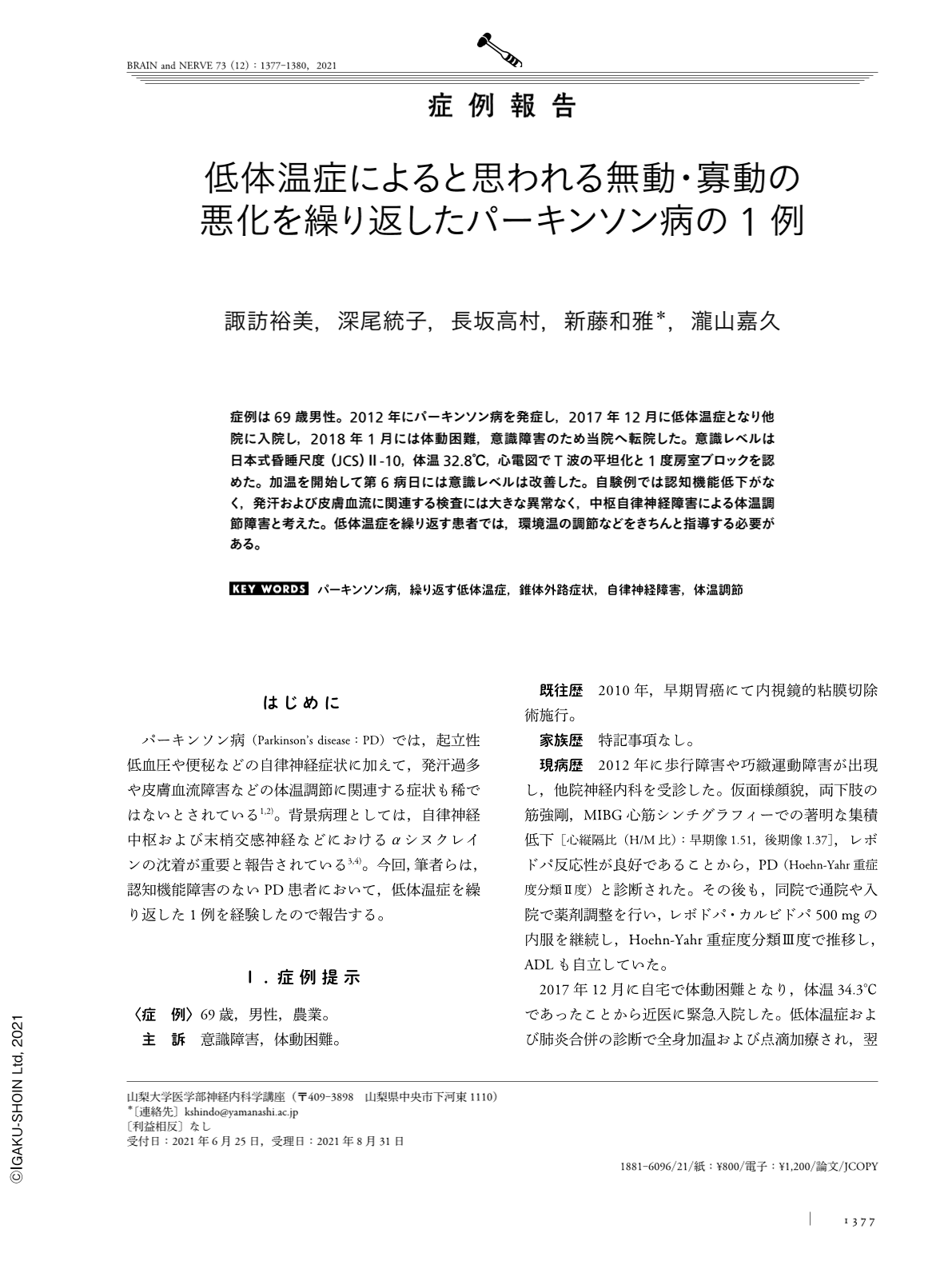Japanese
English
- 有料閲覧
- Abstract 文献概要
- 1ページ目 Look Inside
- 参考文献 Reference
症例は69歳男性。2012年にパーキンソン病を発症し,2017年12月に低体温症となり他院に入院し,2018年1月には体動困難,意識障害のため当院へ転院した。意識レベルは日本式昏睡尺度(JCS)Ⅱ-10,体温32.8℃,心電図でT波の平坦化と1度房室ブロックを認めた。加温を開始して第6病日には意識レベルは改善した。自験例では認知機能低下がなく,発汗および皮膚血流に関連する検査には大きな異常なく,中枢自律神経障害による体温調節障害と考えた。低体温症を繰り返す患者では,環境温の調節などをきちんと指導する必要がある。
Abstract
In 2012, a 69-year-old man noticed slowness in his movements and was diagnosed with Parkinson's disease (PD). In December 2017, he was admitted to a hospital with a diagnosis of hypothermia. One month later, in January 2018, he had difficulty moving around at home and was admitted to our hospital because of impaired consciousness. On admission, his consciousness was rated as level II-10, his body temperature was 32.8℃, and he was pale and had extrapyramidal symptoms. Electrocardiogram showed T-wave flattening and the first degree of atrioventricular block. Warming was started with improvement of the level of consciousness on the sixth hospital day. His cognitive function was normal (HDS-R 27/30), but the Schellong test (an orthostatic blood pressure test) showed a marked decrease in systolic blood pressure upon standing. Although sympathetic skin and flow responses were almost normal, except for low levels of basal skin blood flow, we speculated that the patient had impaired thermoregulation due to central autonomic dysfunction. In the literature, such impaired thermoregulation was suggested as the cause of hypothermia in seven patients with PD. Therefore, we recommend that patients with PD and repeated hypothermia should be instructed to maintain a suitable room temperature and to dress warmly.
(Received 25 June, 2021; Accepted 31 August, 2021; Published 1 December, 2021)

Copyright © 2021, Igaku-Shoin Ltd. All rights reserved.


